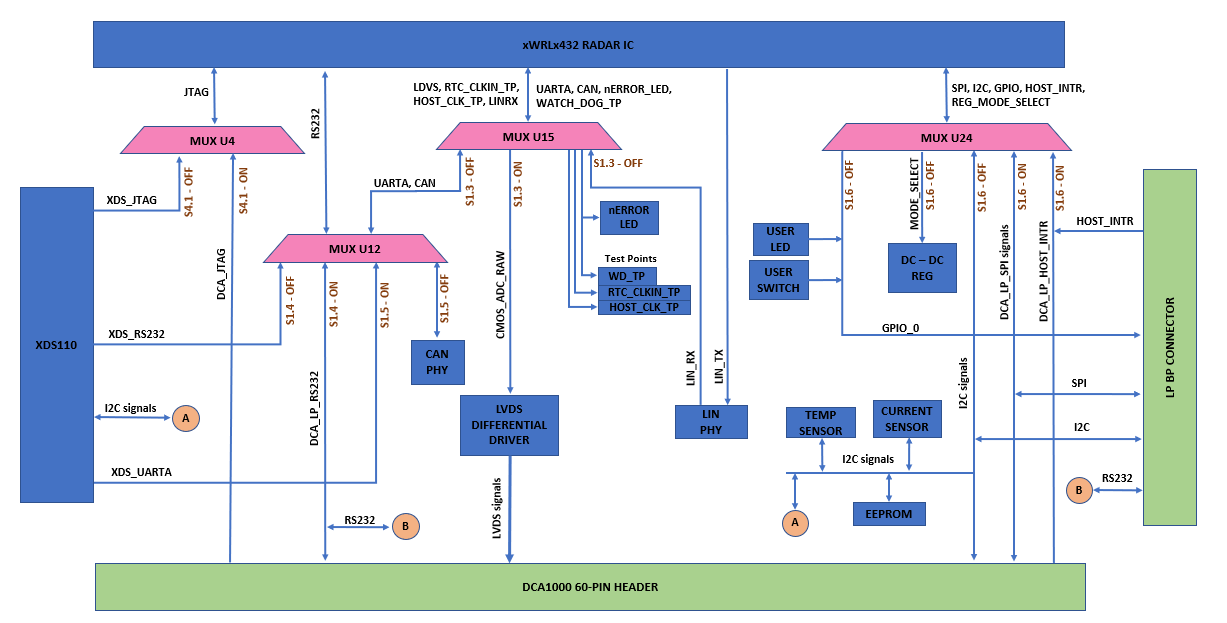SWRU596 December 2022
- 1Abstract
- 2Getting Started
- 3Hardware
- 4EVM Mux Block Diagram
- 5PCB Storage and Handling Recommendations:
- 6XWRL6432BOOST Antenna
- 7Software, Development Tools, and Example Code
- 8TI E2E Community
- 9References
4 EVM Mux Block Diagram
Figure 4-1 shows different muxing options for the digital signals. The device is pin limited to support different features simultaneously; hence various internal IPs and signals are pin multiplexed. EVM provides de-muxing options using various analog mux and sliding switch options. Figure 4-1 shows different muxing switch positions to enable different muxing options to connect to different peripherals.
 Figure 4-1 Muxing options for the EVM
Figure 4-1 Muxing options for the EVM